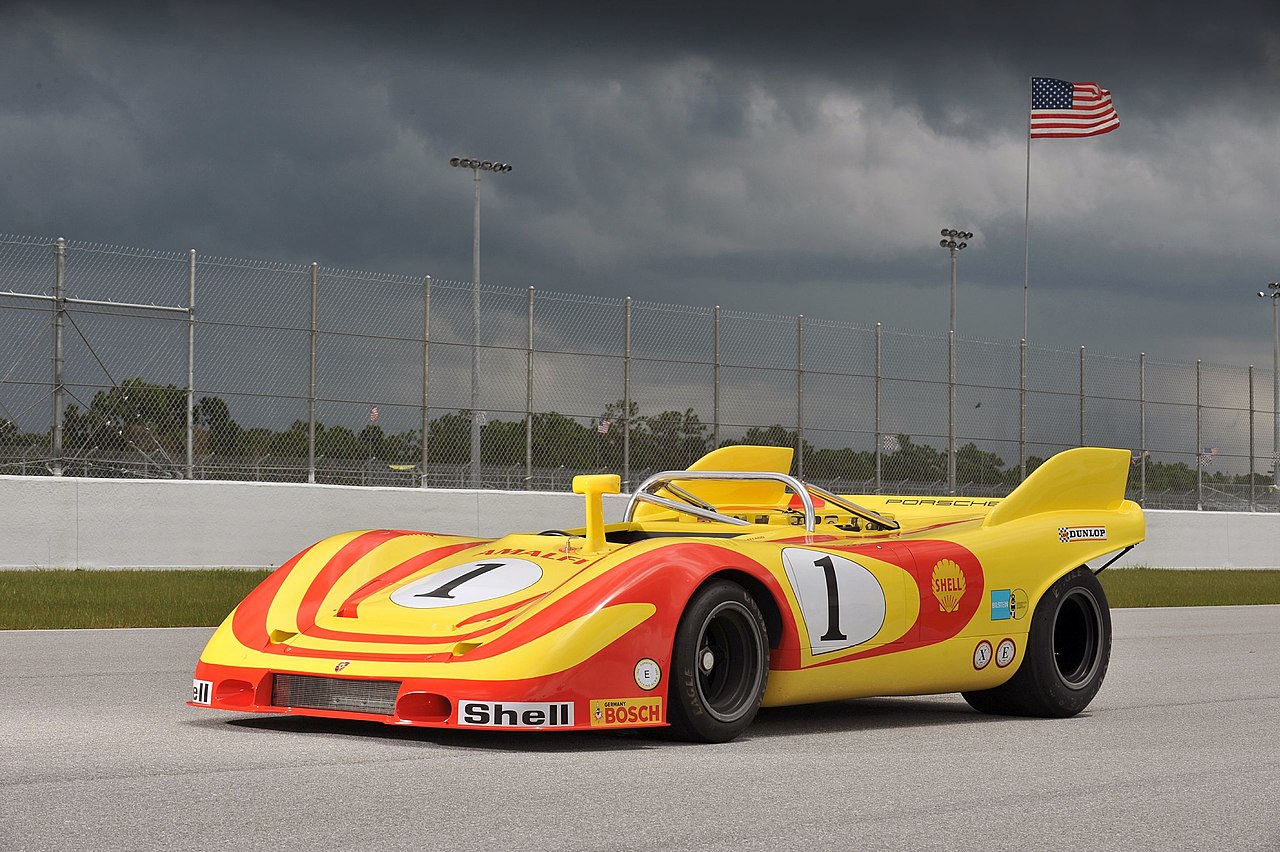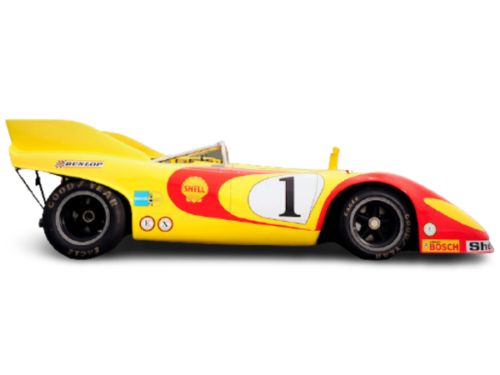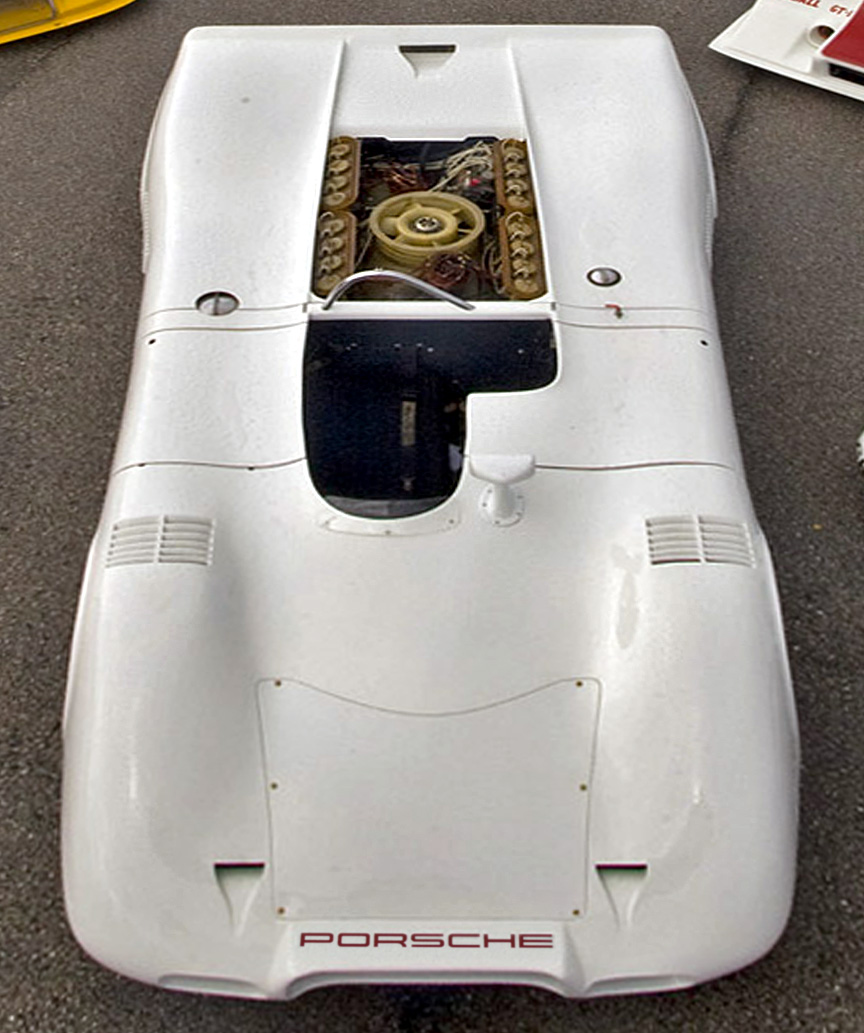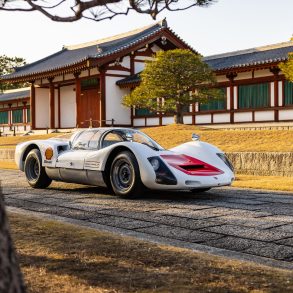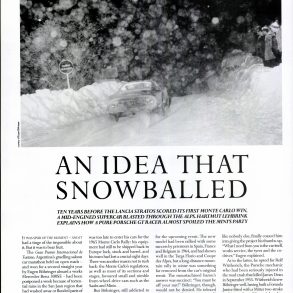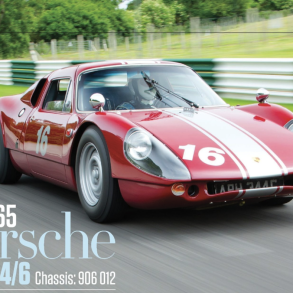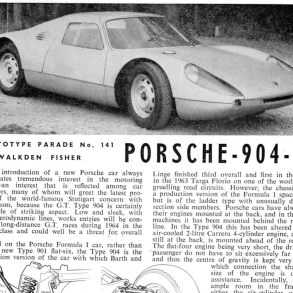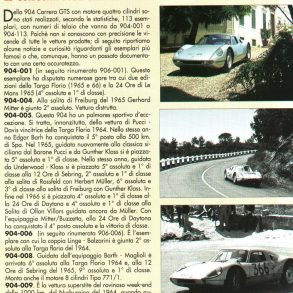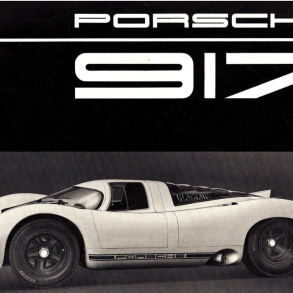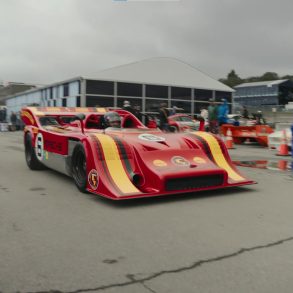Porsche 917 ‘Interserie Spyder’ (1969 – 1970)
Porsche 917 PA Spyder
Premiere: 1969 August 17 at Can-Am Mid-Ohio race / Achievements: Interserie winner 1971
Of all the 917 variants, the ‘Interserie Spyder’ was one of the most successful. It won the Interserie championship outright for two years in a row before the model was replaced by the 917/10 of 1972. Three lightweight 917 Spyders were prepared by Porsche specifically for the Interserie, a new European-based racing series that mimicked the Can-Am rules from North America. Since it was initially run under Group 7 regulations, Porsche could remove the roof and make the design even more potent.
Under the spyder body was essentially the same design which won the 1970 24 Hours of Le Mans outright. This included the car’s lightweight aluminum space frame and the potent flat-12 engine in the rear. The Spyder bodywork was similar to a sole car made for the 1969 Can-Am that was called the 917PA.
Since the Interserie put a new lease on life for a number of cars which became redundant in the World Championship of Makes, the grids were diverse. Cars such as the Alfa 33, Ferrari 512M and Porsche 917 competed with new Group 7 designs from McLaren and March.
In Porsche’s Own Words
By 1969, Porsche develops the 917 Spyder with a view to competing in the extremely popular North American racing series, the Canadian American Challenge Cup (Can-Am). Two units featuring 4.5-litre twelve-cylinder naturally aspirated engines are constructed in Zuffenhausen, and Jo Siffert takes one to the US to compete in the Can-Am races, ultimately placing fourth overall. The car becomes known as the 917 PA Spyder, with “PA” standing for “Porsche + Audi” as they are the two sales organisations in the US at the time.
The second car serves as a test vehicle, becoming famous in 1971 when it is used to test the most powerful naturally aspirated race engine ever built at Porsche: a sixteen-cylinder engine with 6.5-litre displacement and 755 PS, developed at the behest of Ferdinand Piëch. The 917 Spyder aluminium frame is reinforced and extended to accommodate the engine’s extra 25 cm length, taking the race car’s weight up to 841 kg. Around the same time, a twelve-cylinder turbo engine is built.
Though at 270 kg it is only 50 kg lighter than the sixteen-cylinder, it considerably outperforms its contemporary, offering 850 PS output from a 4.5-litre displacement. Engineers fully dedicate themselves to continuing to develop Porsche turbo technology, while the sixteen-cylinder 917 Spyder is destined instead for the Porsche Museum in October 1971.
The Story
The 917 Spyder was the topless version of the 917 K, created for the Can-Am racing. There were two 917 Spyders created by the factory, chassis 917-027 and -028. The 027 was a test car and the 028 was made for action. As it was created for Porsche+Audi (PA), the American brand that marketed Porsches and Audis in the USA, the car was called the 917 PA. Only chassis 028 was called the 917 PA. It was raced by Jo Siffert at five Can-Am races in 1969. His best result was third at the Bridgehampton race. For the final round of the 1969 Can-Am, the car received a new showel-like nose. In this configuration it was only raced once.
The Can-Am setup gave the 4.5-litre more power (approx. 428 kW compared to the 382 kW in the “European” 917 in 1969). 917 PA was the first 917 with open rear end, something that would be transferred to the 917 K for the next season.
In 1970, the 917-028 stayed in the garage and in 1971 it was raced again, now with the 5-litre engine. Three racing teams in Europe built their own 917 spyders for the 1971 Interserie. These cars were built from the previously crashed 917 coupé chassis. 917-026 was the first Spyder to enter racing in Europe, then 917-007 and then 01-021 (not a Porsche chassis number). The 01-021 was created using some parts of 917-021 and remains of chassis 917-015. 4.5-, 4.9- and 5.0-litre engines were used.
In the Can-Am, the 917-028 (originally the PA) received a new shorter nose and rear fins during the season. The rear fins had appeared in the beginning of 1971 on all factory team 908/03 and 917 K racing cars and some private teams also upgraded their cars with that new feature.
The 1971 Interserie was won with 917 Spyder driven by Leo Kinnunen of A.A.W. Racing Team (he would also win the series in 1972 and 1973).
For 1972 Intreserie one more 917 Spyder was created from chassis 917-031. It was the chassis of the 1970 Zeltweg 1000 km winning and the 1971 Le Mans 2nd place 917 K coupé. The 01-021 chassis car gets a 5.4-litre engine, the first of this size among the 917s. The 917-028 (originally the PA), gets a 4.5-litre turbo engine by the end of October for the last Can-Am race of the 1972 season.
For 1973, the 917-028 (ex PA), got a body of the 917/10. Different engines were used, both normally aspirated and turbocharged, the most extreme of them the 5.4F12 twin-turbo.

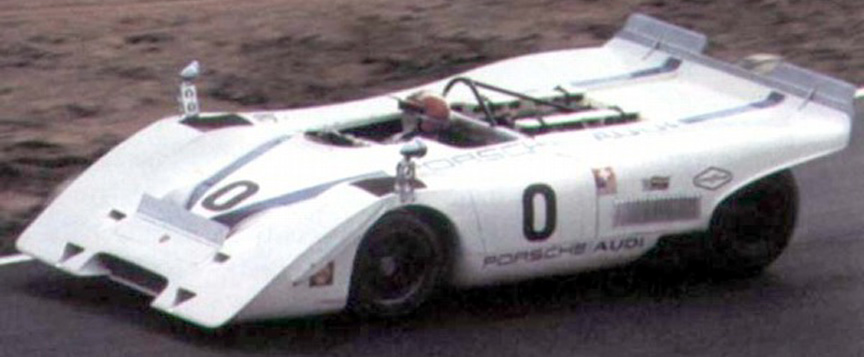
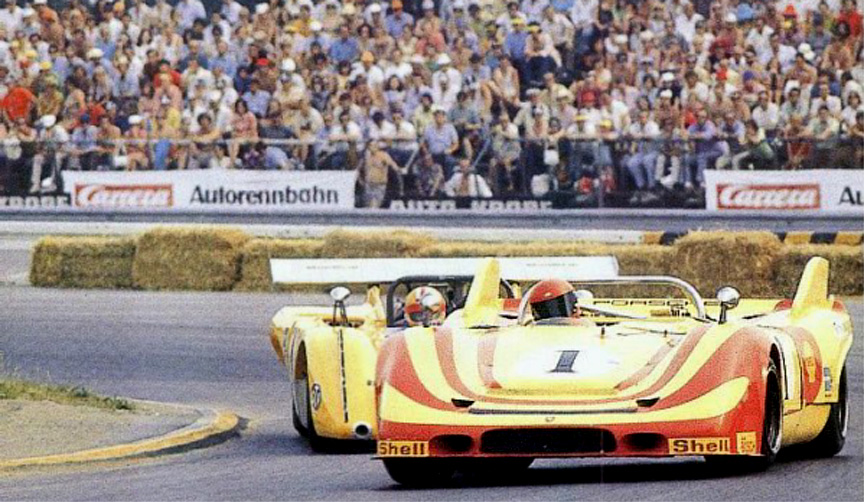

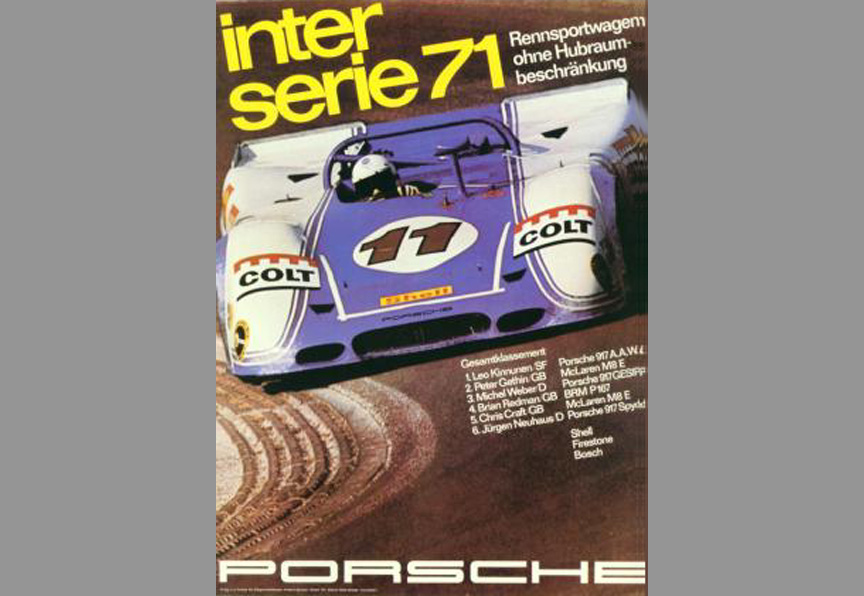
The 16-Cylinder Prototype
The 917-027 factory spyder chassis was used only for tests and in 1971 even fitted with experimental 16-cylinder flat engines – 6.0-litre (566 kW) and 7.2-litre (647 kW). The 16-cylinder newer saw racing, because the turbocharged 12-cylinder would be cheaper and would produce more power. The engine tests on the 917-027 were made with the 917/10 in mind. Learn more about the Porsche 917 16-Cylinder Prototype.


